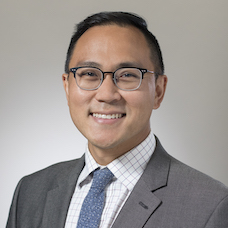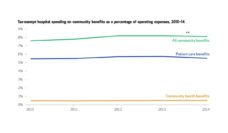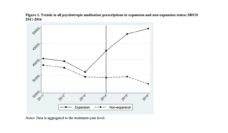Hospitals and clinics who partner with Uber and Lyft may be solving for patients’ transportation needs, but it might not improve access to health care.
This may sound puzzling as transportation has long been understood as a major barrier to care. In a review of 61 studies, transportation was consistently related to missed appointments among low-income or minority patients in the US across various geographic settings, disease types, and age groups. Among the two survey-based studies, 50% reported missing an appointment because they lacked adequate transportation.
The transportation barriers persist for low-income patients despite state Medicaid programs providing non-emergency medical transportation (NEMT) benefits, including vouchers for public transportation and rides from private contractors. Millions miss appointments every year. The delivery of NEMT may be a barrier. Rides are often scheduled days to weeks in advance of an appointment. Travel and wait times can be long because of indirect routes related to picking up and dropping off multiple passengers. Measuring NEMT’s impact on access has been challenging because most services do not collect data on who uses these services, how often, and for what. When travel data is available we cannot easily link it with clinical data to measure outcomes such as missed appointments, avoidable hospitalizations, or better health outcomes.
Ridesharing has been proposed as a promising solution. With companies like Uber and Lyft, a wide network of drivers is readily available for on-demand pick-up or drop-off and the costs can easily be tracked – a likely win-win. Patients could have more reliable rides and a better travel experience. Hospitals, clinics, and insurers could see who uses rides when and measure whether rides reduce missed appointments and improve clinical outcomes.
Through two sequential studies, we tested whether ridesharing could reduce missed appointments for Medicaid enrollees with primary care appointments at the University of Pennsylvania Health System. In the pilot study, we found the likelihood of appointment attendance was 2.5-fold higher in a clinic after ridesharing was offered. However, in the more statistically rigorous subsequent trial where we randomized patients to receiving ridesharing versus not, we found no difference.
Hospitals and clinics who partner with Uber and Lyft may be solving for patients’ transportation needs, but it might not improve access to health care.
Why might this be the case? Through these studies and ongoing work, my team and I have learned a few key lessons.
First, identifying who needs transportation, when, and at what cost will be a critical step going forward. For example, patients with diabetes or receiving dialysis may benefit from unrestricted transportation services because the programmatic costs are small compared to downstream costs of disease complications. Providing rides for blood pressure checks may not have the same favorable financial tradeoffs.
Second, identifying why a patient misses an appointment remains key. Imagine a patient’s car stops working, but that day their child is also sick or they are now worried about getting groceries for the evening. So, instead of scrambling to find transportation, they skip their appointment because other needs became paramount. Framing appointment attendance as simply a transportation problem doesn’t capture the likely influence of many other social forces.
Finally, what if the medical appointment is the wrong problem to solve? What if, instead of structuring appointments around provider schedules and locations, we structured medical care around better patient experiences and the journey through health care? Reframing the problem may lead to non-transportation based solutions, like telemedicine or e-visits. We should meet patients where they are and when convenient. Then patients will be more likely to get the care they need and achieve the outcomes the health sector wants.
Achieving better health and access to care is a goal that aligns health care organizations, social services, and public health to care for patients. As national attention is focusing on identifying the social determinants of health, reframing what problem needs solving remains critical. If inadequate transportation is the challenge, then we should provide more and better ride options. If access is the challenge, we need to rethink how health care can be delivered in a more accessible way. Ridesharing may only be a small part of the ultimate solution.














